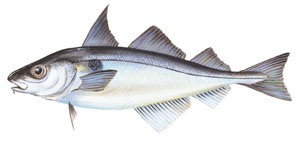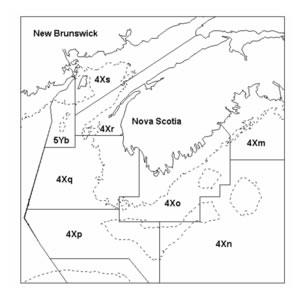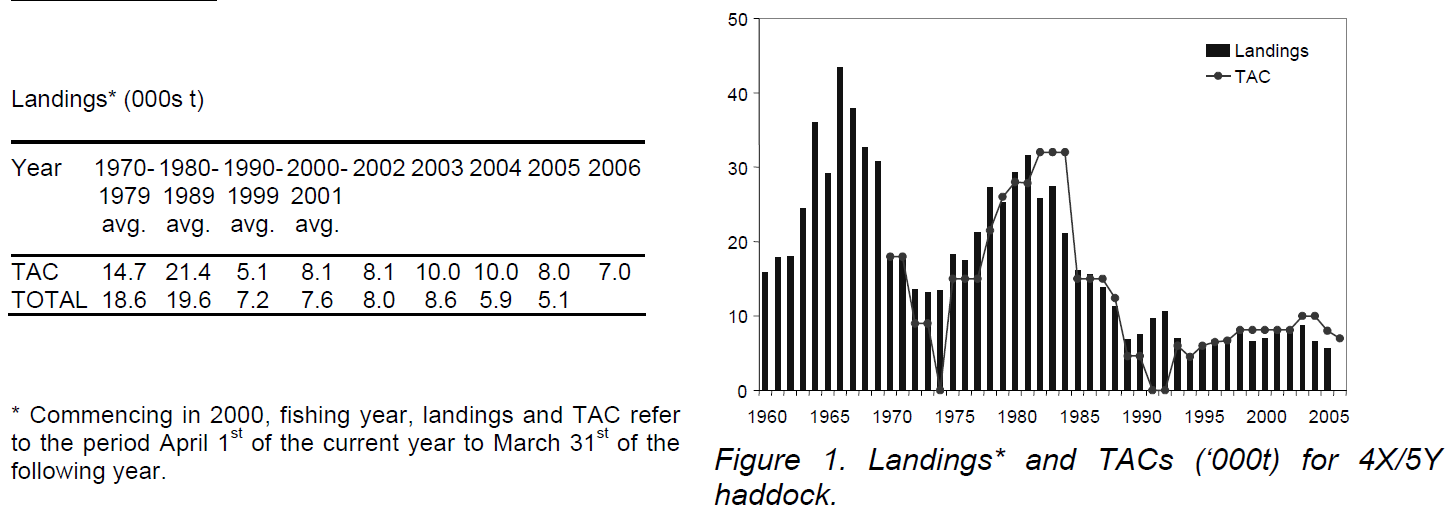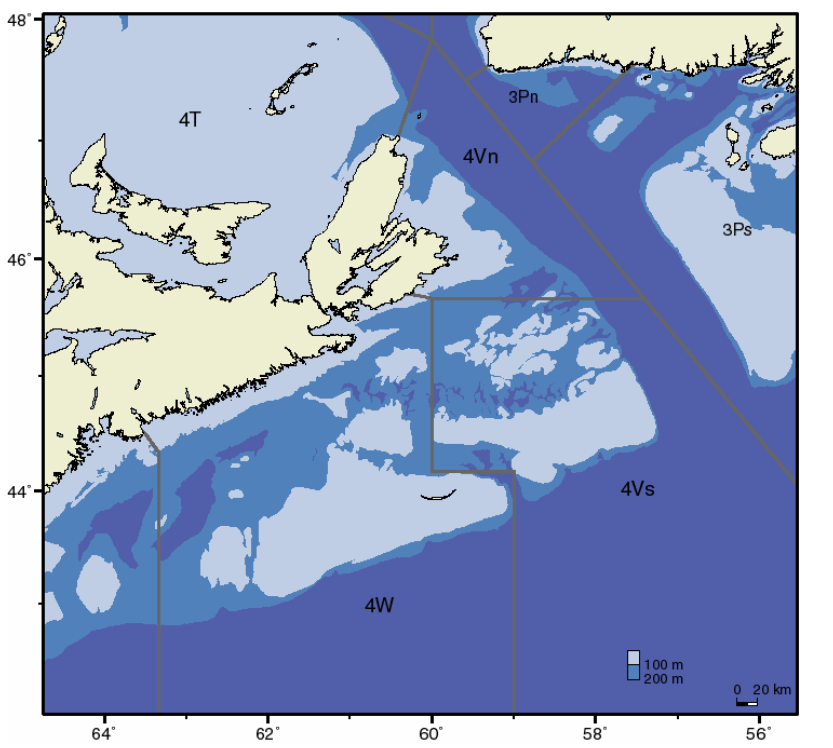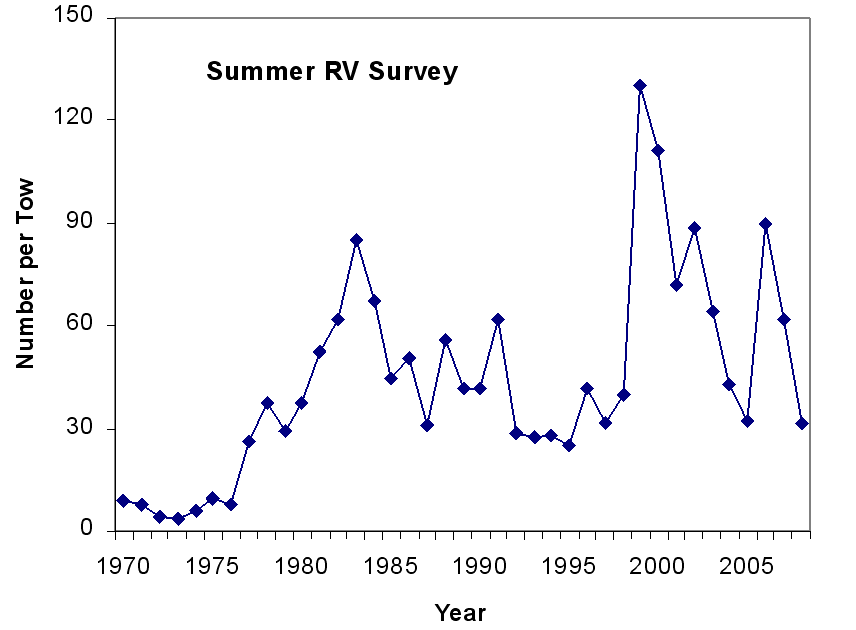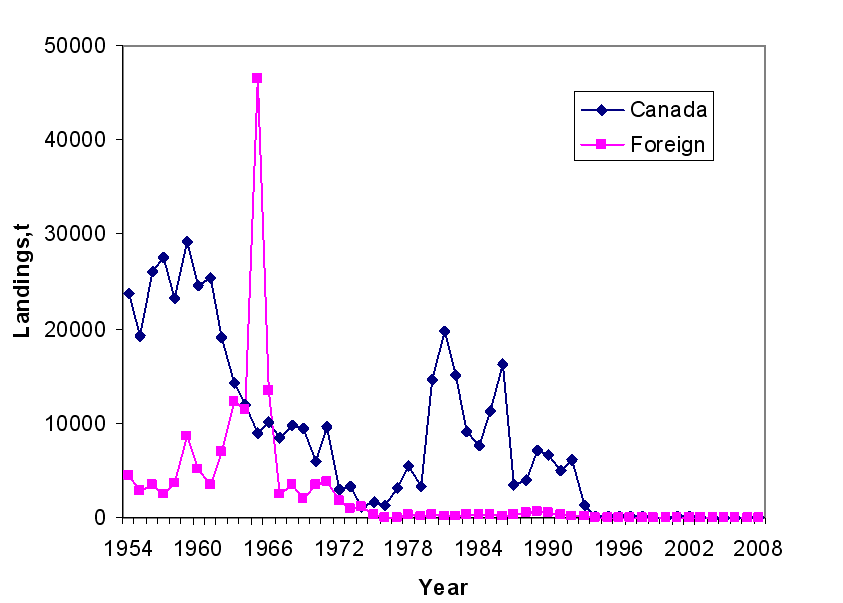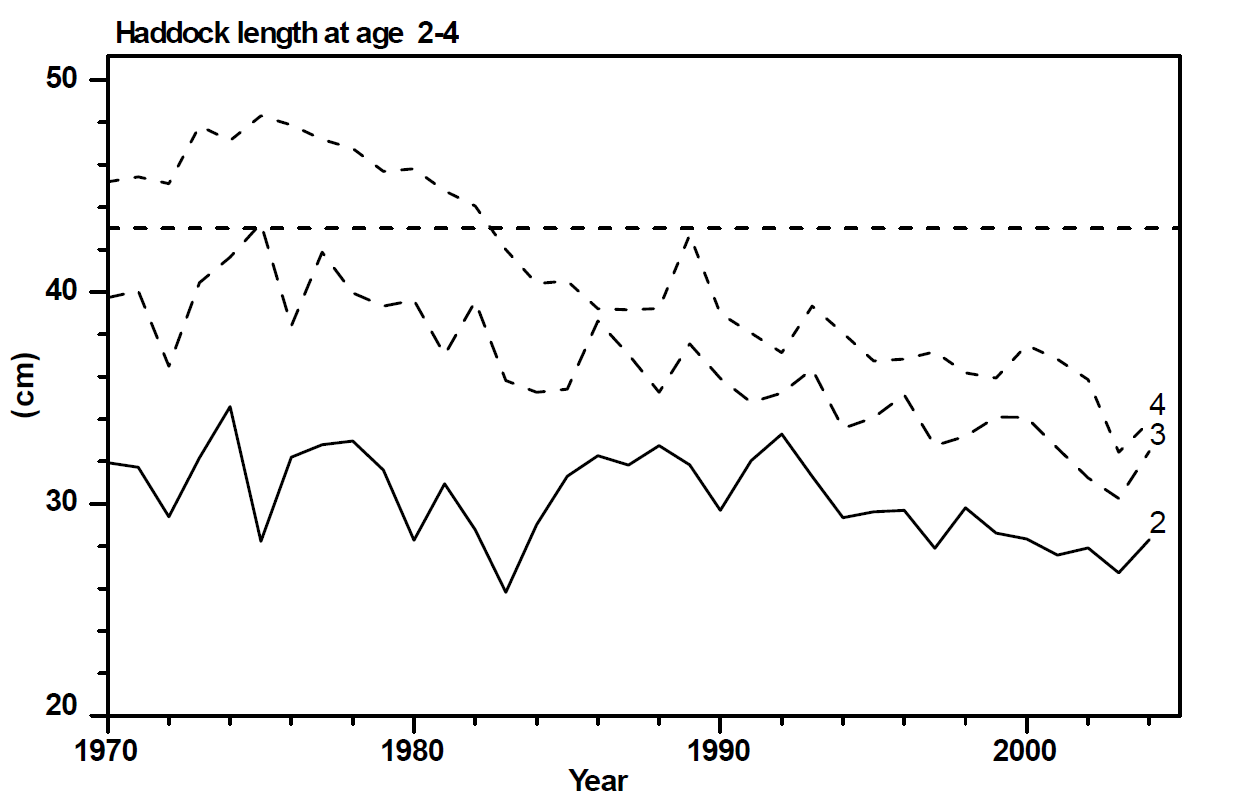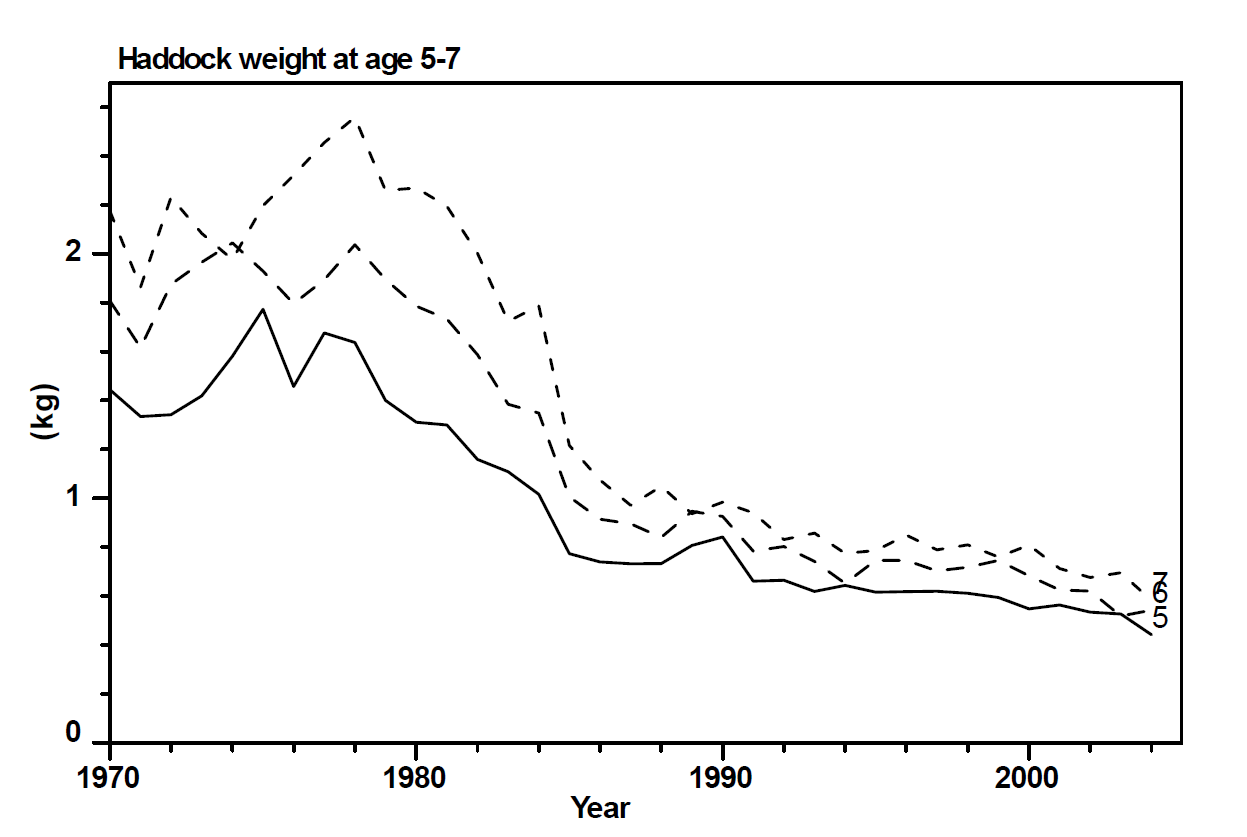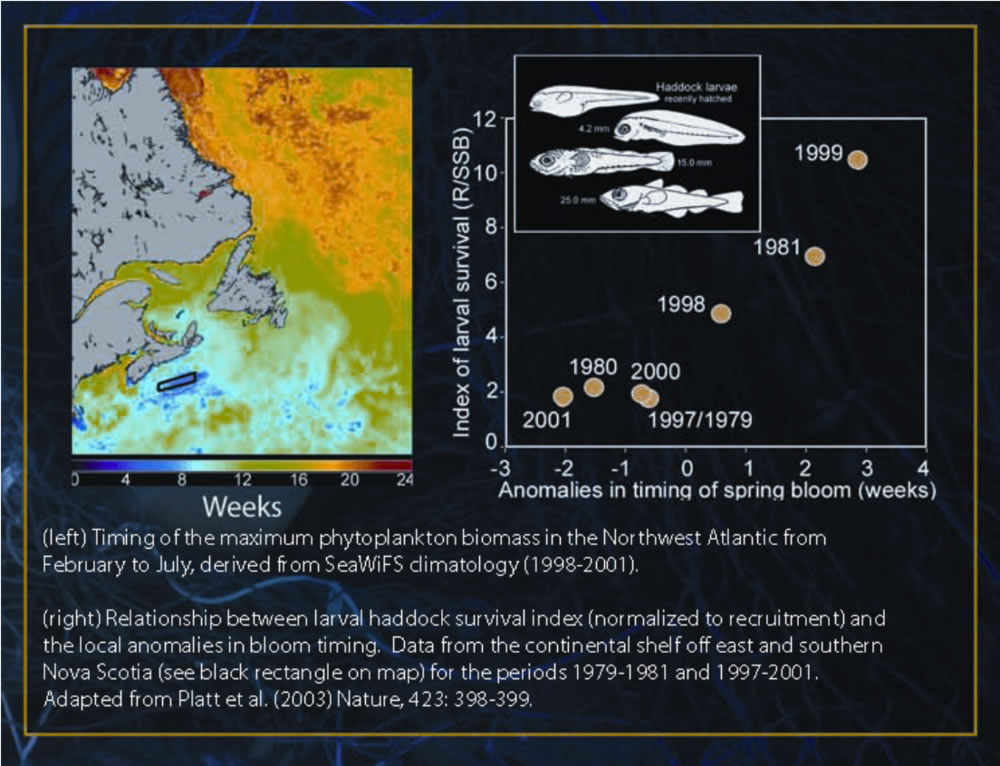Haddock
Latin Name
Melanogrammus aeglefinus
Group Name
Groundfish
Habitat
Haddock are native to the North Atlantic and occur on both sides of the ocean. In the northwest Atlantic they range from the Strait of Belle Isle to New England, while in the northeast they are found in the Bay of Biscay northwards around Scandinavia into the Russian Arctic. In Canada, the most important populations occur from the Bay of Fundy to Cape Breton and the Grand Banks. A deep-sea fish, haddock usually live at depths of 50-250 m.
Species Description
Haddock are an elongated fish with a forked tail, dark purplish-grey on their head and back and a black lateral line. They have three dorsal fins, the first triangular and the next two squarish. Their coloration gets lighter below their lateral line, becoming silvery grey with a pink tinge and white on their belly and under their head. They have a large, distinctive black spot over their pectoral fins. Their maximum length is about 100 cm and maximum weight around 4 kg.
Assessment: Southern Scotian Shelf and the Bay of Fundy Stocks (DIV. 4X/5Y)
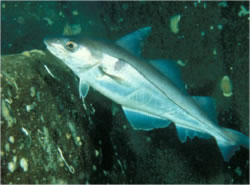
A haddock. Picture by Salesjö, A.
Haddock (Melanogrammus aeglefinus) are found on both sides of the North Atlantic. In the west Atlantic, they occur from southwest Greenland to Cape Hatteras. A major stock exists in the southern Scotian Shelf and Bay of Fundy area. This bottom-dwelling species is a member of the cod family and feeds mainly on small invertebrates. It is most common at depths of 25-125 fathoms (46-228m) and in bottom temperatures above 2°C. Although seasonal migrations are evident within the stock area, there is relatively little exchange between adjacent haddock stocks.
Haddock on the southern Scotian Shelf reach 15 inches (38 cm) and 1.1 pounds (0.5 kg) by age on average. Growth slows thereafter and haddock reach only about 19 inches (48 cm) and 2.4 pounds (1.1 kg) by age 10. Haddock in the Bay of Fundy grow more rapidly than those on the southern Scotian Shelf. Approximately 50% of female haddock are mature by age 3; however the number of eggs produced by a female of this age is low and increases dramatically with age. Major spawning grounds are found on Browns Bank and peak spawning occurs in April/May.
Reported annual landings have been as high as 43,000t and the long-term average is about 18,000t. Landings have been below 11,000t since 1988. Historically this fishery has been dominated by mobile gear except during 1990-93 when the proportion of landings taken by fixed gear was greater. Quotas for this stock were introduced in 1970 and a spawning season/area closure has been in place since that time.
Eastern Scotian Shelf Haddock (DIV. 4TVW)
The haddock (Melanogrammus aeglefinus) resource on the eastern Scotian Shelf and southern Gulf of St. Lawrence is considered a single management unit distinct from the adjacent stock in 4X. The majority of 4TVW haddock occur on the offshore banks of the Scotian Shelf ranging from Emerald Bank in the west to Banquereau in the east.
Haddock prefer hard sand or gravel bottoms at depths ranging from less than 50m to about 350m, and temperatures ranging from 4-8°C. During summer haddock are distributed on the tops of the banks while in the winter months they move to deeper waters to avoid cold temperatures. Spawning occurs in the spring and the principal spawning areas are the complexes of banks in 4W including Emerald, Western and Sable Island Banks. In the past, these spawning aggregations were the target of intense fisheries until the imposition of a closed area, which encompasses Emerald and part of Western Bank in 1987.
Recent studies on haddock egg production have revealed that female haddock produce fewer eggs at a specific length than any other stock in the North Atlantic. For example, a 45cm haddock produces about 150,000 eggs each year. The eggs, which are liberated near the bottom, rise to the surface during an average incubation period of two weeks. During the first year of life, young haddock actively feed on plankton in the surface waters and gradually descend to the bottom as juveniles in mid-summer. Thereafter, they remain on bottom, feeding and growing at a rate of about 5-10cm (2-4 inches) in length per year. When sexually maturity is reached after 3-5 years, growth rates diminish. Haddock are relatively long-lived (>10 years) and age is determined from the pattern of rings in their otoliths (earbones).
Since 1987, the haddock fishery has been regulated through a combination of by-catch restrictions and trip limits. The year-round nursery ground closure established in 1987 (initially exempt to fixed gear) remains in effect. In 1993 the area was closed to all groundfish fishing.
Research
2004 Research Document (CSAS ResDocs - 2004/106)
Research on haddock has focused on two areas. There have been large reductions in size at age since the 1960s. Current research attempts to better understanding the cause of these declines and implications for long-term productivity. To what degree are the decreases in size at age due to density dependence, environmental change and selection due to fishing?
Another area of research is on the survival of juvenile haddock in relationship to the phytoplankton bloom. This work was pioneered by Platt et al. (2003) Nature 423: 398-399. We are expanding on this research by testing for relationships with other indicators of the phytoplankton bloom and by examining correlations with the fall bloom.
- Date modified:
